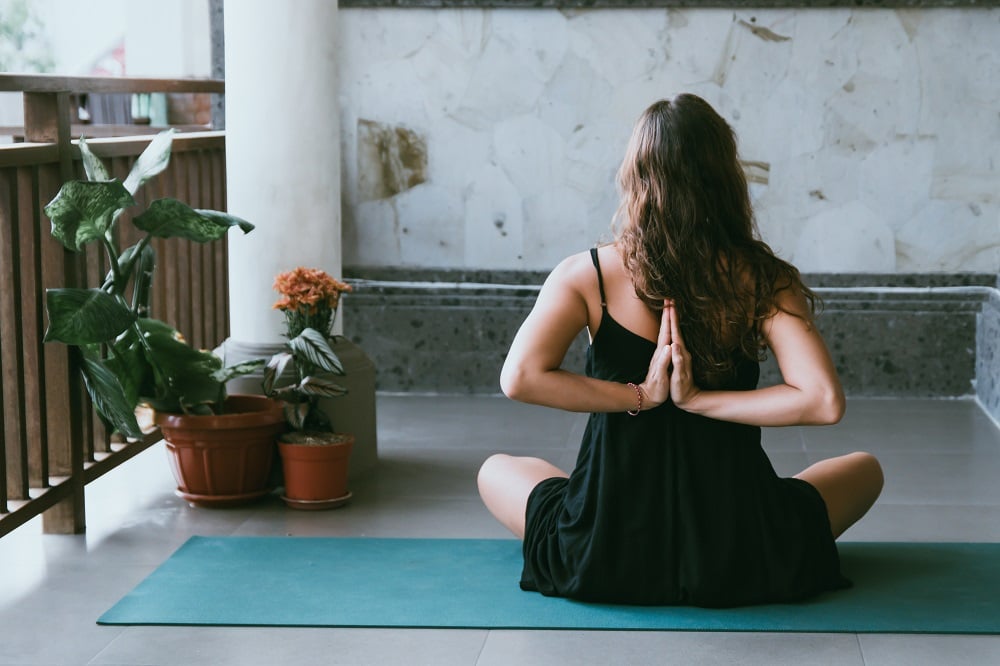
28 Apr 4 Yoga Poses to Soothe Restlessness and Anxiety
Practicing the following four simple Yoga poses daily can help provide a profound sense of relief and calmness to the mind and body. Spending at least 5 minutes in each pose and focusing on taking full, long deep breaths will allow one to really submerge into the pose, and unlock the physical and mental sensations and benefits it has to offer. The beauty of these poses is that they are accessible to everyone; no specialised equipment, particular skill, supervision or flexibility is required.
Grab your mat, wear comfortable clothing, perhaps light some incense or candles, play some soothing music or binaural soundscape and perhaps incorporate the use of one of the quality essential oils for a real sensorial experience. Practice one of the poses individually, or string as many of them together to create your own sequence in any which was you please.
Remember to enter these poses with a sense of compassion and non-judgement, realise that disruptive thoughts may arise, but all you need to do is bring yourself back to the present moment through focussing on the details, depth and texture of the breath.
1. CHILD’S POSE or Balasana
This comforting pose stretches into the lower back and hips, its calming qualities can provide relief from stress, anxious tendencies and mild depression.
- Ideally come onto a comfortable mat, kneel down and sit on your shins with your toes untucked and your torso upright (this seated pose is called Vajrasana).
- You can have your knees together or spread in a V-shape for a more intense opening in the hips.
- Once you are comfortable, slowly and gently fold your torso forward, simultaneously dropping your seat down towards the heels.
- Your arms can either be at your sides or outstretched in front of you, whatever feels good for your heart space and shoulders. Arms on either side of the body is more relaxing whereas overhead is more energising.
- If you need more support, you can always place a bolster or a thick, firm pillow between your knees and a blanket under the forehead for optimum comfort.
- Relax here, breathing deeply into the belly.
Allow your body to melt down towards the mat; releasing tension in your neck, arms, shoulders and back muscles. Close your eyes, soften and surrender into the pose as you get heavier and more relaxed with every exhale.
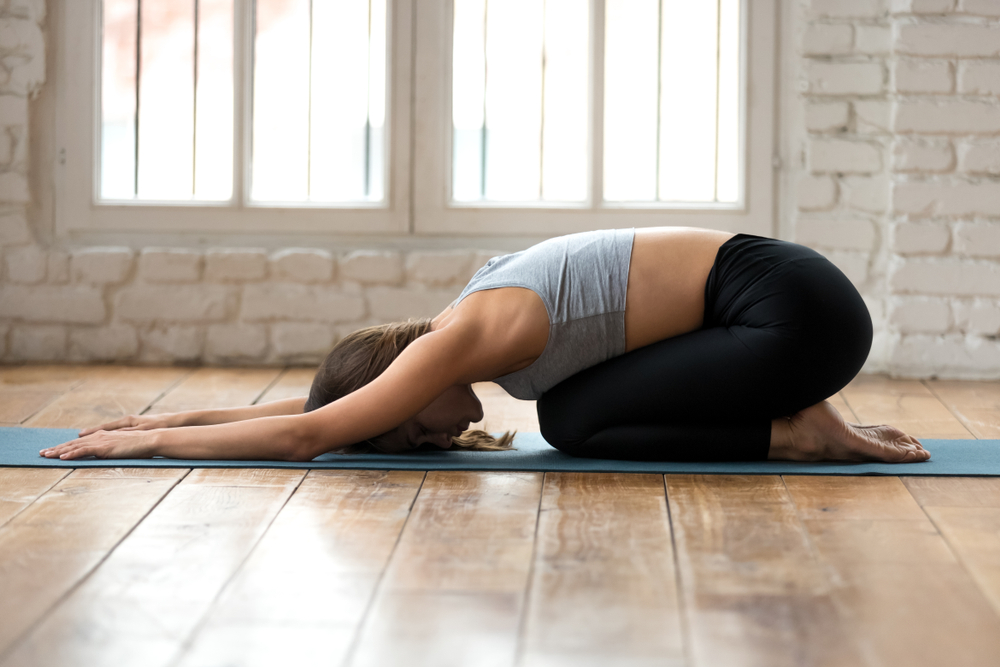
2. Legs Up the Wall or ‘Viparita Karani’
Elevating the legs above the heart in this pose results in a lowered heart rate, slowing down the body and allowing tension and stress to melt away. This pose is also fantastic for insomnia.
- First, dim or turn off the light to prevent any harsh lighting from above to affect your sense of ease in the posture.
- If needed, place your mat against a solid wall, where you can extend your legs up the wall without obstruction.
- Shimmy your seat as close to the wall as possible and then come to outstretch your legs up the wall at a 90-degree angle. If it’s challenging to keep your back on the floor, use a bolster or cushion under hips to elevate them, supporting the lower back.
- Relax your arms by your side with your palms facing up in an open and receiving gesture, rolling through the wrists and wiggling the fingers until they feel completely relaxed and you can find stillness.
- Once comfortable, gently close your eyes, perhaps placing an eye pad/bag over the eyes to restrict any light from filtering through.
- Allow yourself to completely relax and surrender as you hold this pose for as long as you can, bearing in mind the longer you hold it, the greater the benefits.
This pose is however not recommended if you have diabetes, high blood pressure, are menstruating or pregnant.
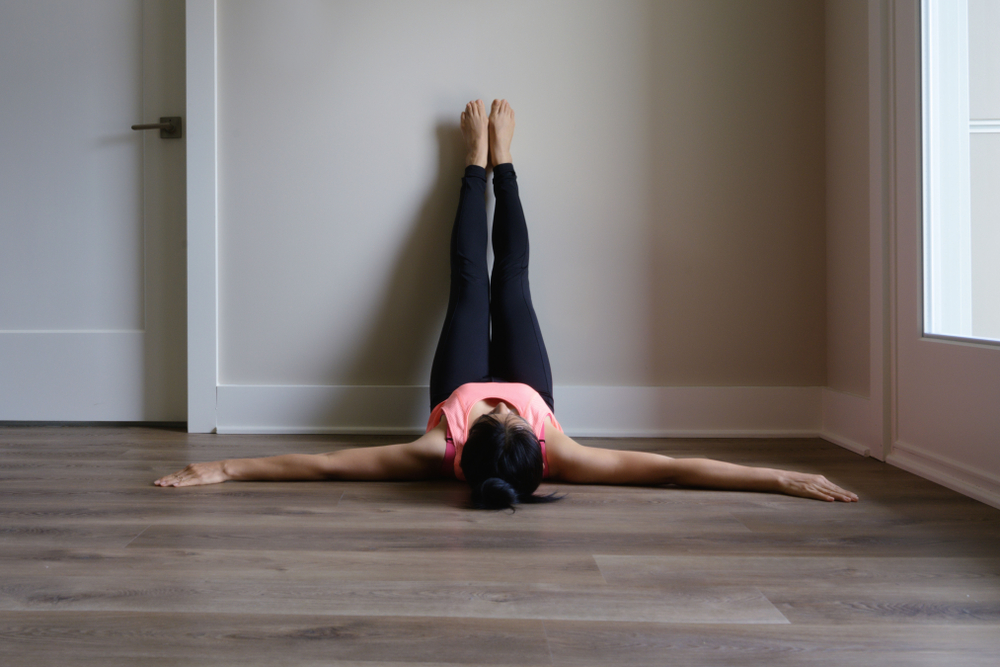
3. Cat & Cow Pose or Marjary & Bitila
Moving between Cat & Cow poses is such a great way to awaken muscles through inviting movement and fluidity into the body, and releasing tension, tightness stuck in the neck, shoulders and back. Paired with breathing it is a super powerful motion, and can also lead to more intuitive movement in the torso.
- Find a ‘table-top’ position by coming on to all fours with your shoulders stacked over your hands, and your hips over your knees. Find a neutral position in the spine.
- As you inhale, lower your belly, draw your shoulder blades together and peel open your chest, lifting your gaze to find Cow Pose.
- As you exhale, press against your palms, round into your back body as you draw your shoulder blades apart from each other, gazing toward your navel, tucking in your tailbone to find Cat Pose.
- Continue these movements following your breath; inhaling into the Cow and exhaling into the Cat, making the breaths and movements more expansive if it feels comfortable.
- Move slowly to feel the movement of each vertebra of your spine and the muscles in the back body loosen and ease up.
- Keep your eyes closed – focus on each transition and on each breath.
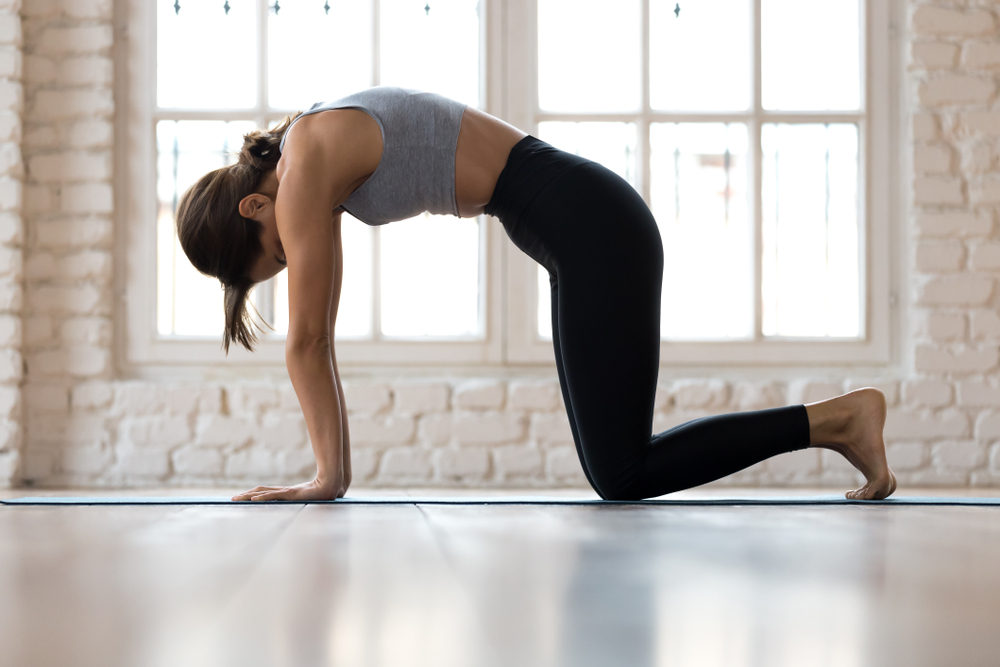
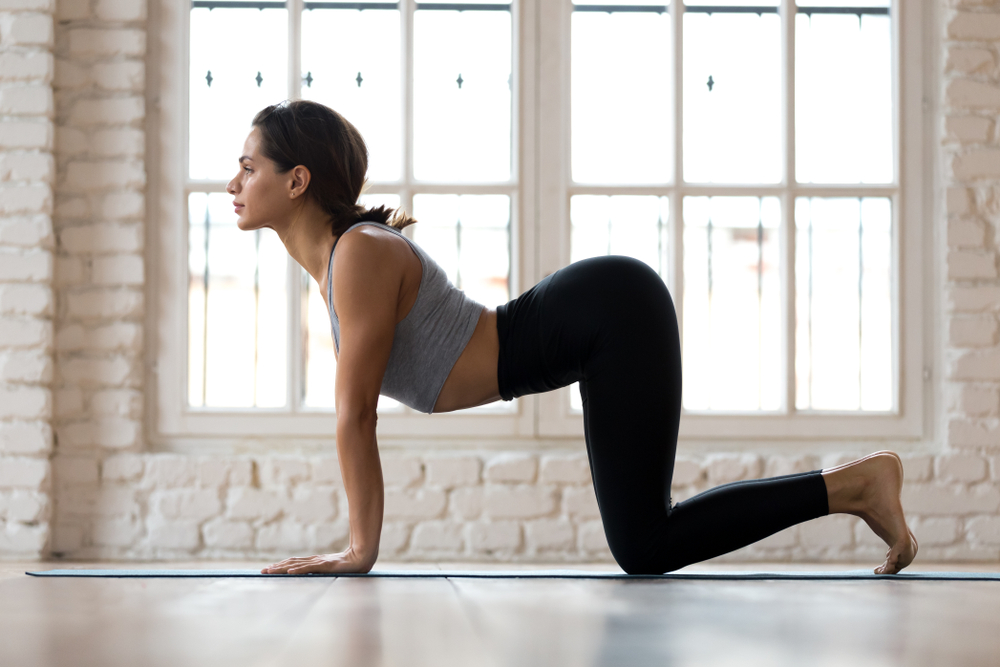
4. Seated Forward Bend or Paschimottanasana
This pose can relieve anxiety, mild depression and helps to relieve headaches.
- Come to sit on your mat with your legs outstretched in front of you.
- Move your seat from side to side, using your hands to adjust the fleshy bits of your buttock to find a comfortable grounding position with your sitting bones connected to the mat.
- Reach your arms up, creating a long straight line from hips to the tip of your head, and then slowly extend your torso forward, towards your toes.
- Extend enough to feel a nice stretch in the back and hamstrings – note: you should not be experiencing discomfort or pain.
- This pose can be as active or as passive as you would like it to be; after a few breaths you should feel a bit relaxed and can perhaps go a bit deeper.
- Close your eyes and take deep breaths, letting go of any thoughts, and hold for as long as you like.
- After a few minutes, mindfully roll up.
The simple pose offers a few variations that offer different effects. As you fold forward you can either keep a flat back, targeting a deeper stretch in your hamstrings, while keeping rounded back will stretch your back more. Toes can either be pointed or flexed also changing the depth and sensation of the stretch. All are beneficial, so feel into whatever feels good for the body.
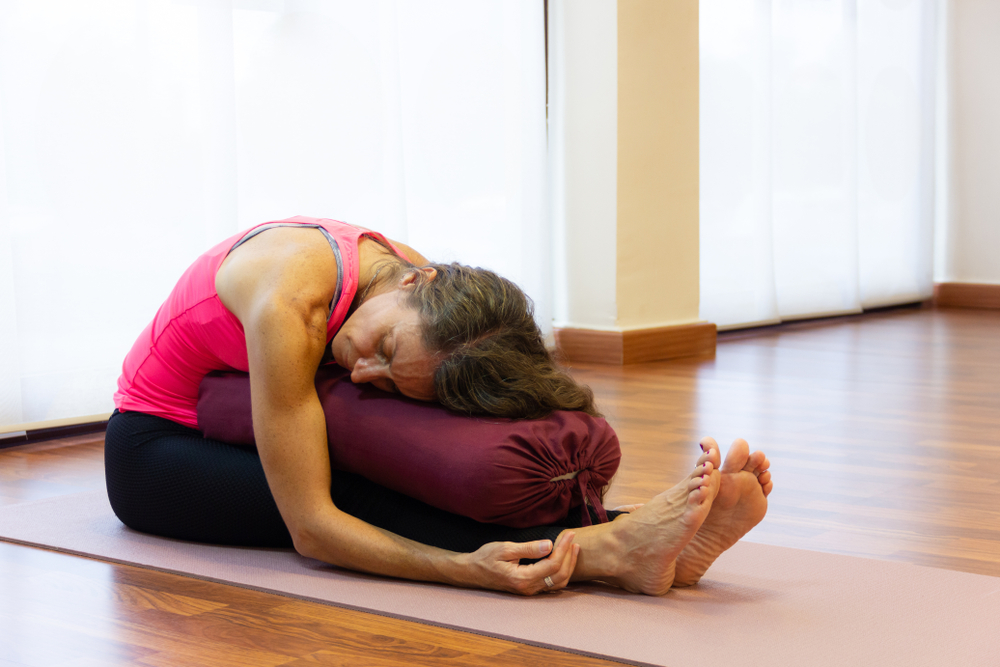
One can try the standing version of this, Uttanasana, standing with feet hip distance apart and folding forward over the legs, either reaching for the toes or taking hold of opposite elbows. The general shape and benefits of the seated and standing version are much the same.



Phinda L Lucas
Posted at 15:49h, 08 MayYoga is my sanity